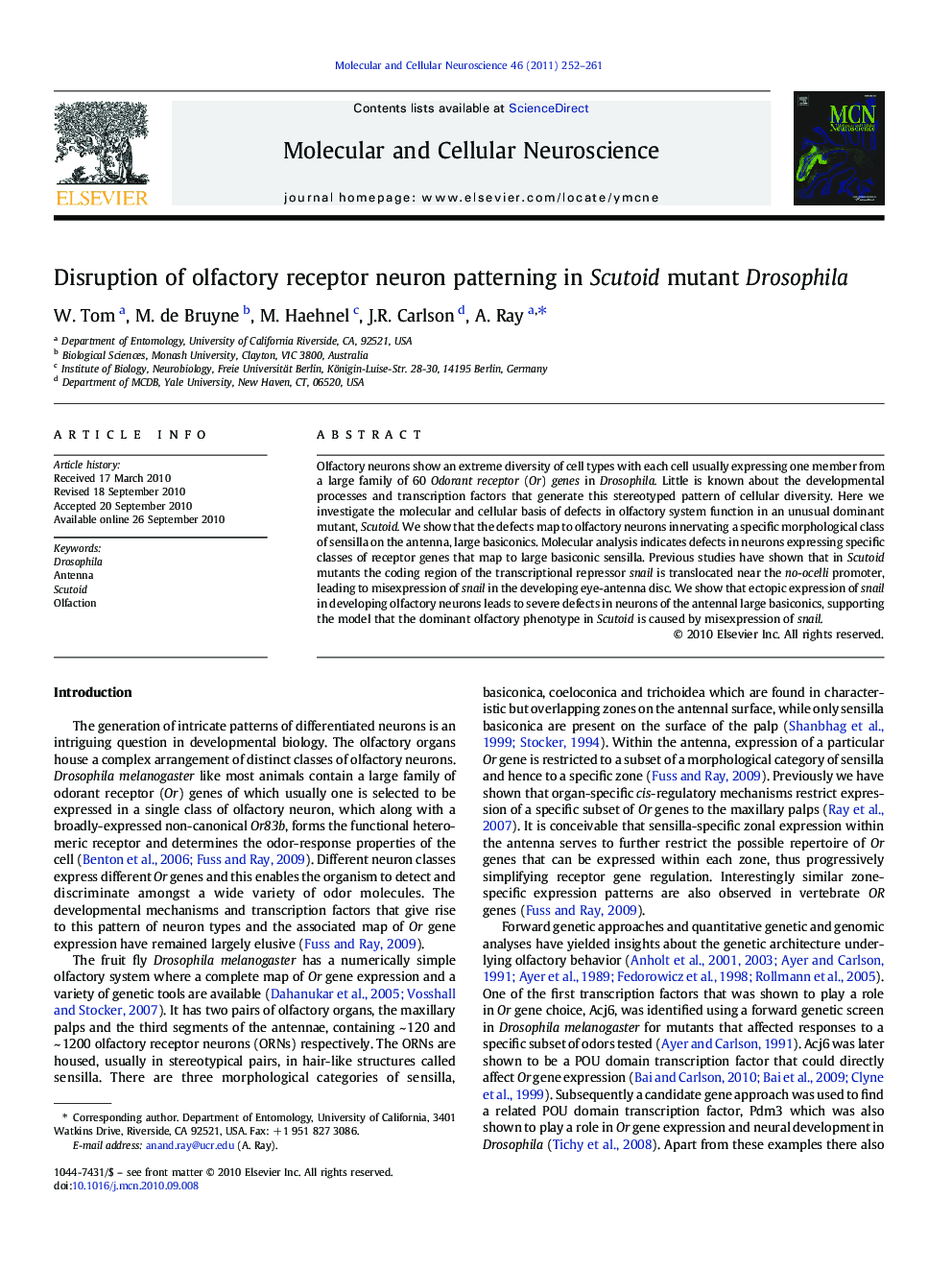| Article ID | Journal | Published Year | Pages | File Type |
|---|---|---|---|---|
| 10956642 | Molecular and Cellular Neuroscience | 2011 | 10 Pages |
Abstract
Olfactory neurons show an extreme diversity of cell types with each cell usually expressing one member from a large family of 60 Odorant receptor (Or) genes in Drosophila. Little is known about the developmental processes and transcription factors that generate this stereotyped pattern of cellular diversity. Here we investigate the molecular and cellular basis of defects in olfactory system function in an unusual dominant mutant, Scutoid. We show that the defects map to olfactory neurons innervating a specific morphological class of sensilla on the antenna, large basiconics. Molecular analysis indicates defects in neurons expressing specific classes of receptor genes that map to large basiconic sensilla. Previous studies have shown that in Scutoid mutants the coding region of the transcriptional repressor snail is translocated near the no-ocelli promoter, leading to misexpression of snail in the developing eye-antenna disc. We show that ectopic expression of snail in developing olfactory neurons leads to severe defects in neurons of the antennal large basiconics, supporting the model that the dominant olfactory phenotype in Scutoid is caused by misexpression of snail.
Keywords
Related Topics
Life Sciences
Biochemistry, Genetics and Molecular Biology
Cell Biology
Authors
W. Tom, M. de Bruyne, M. Haehnel, J.R. Carlson, A. Ray,
